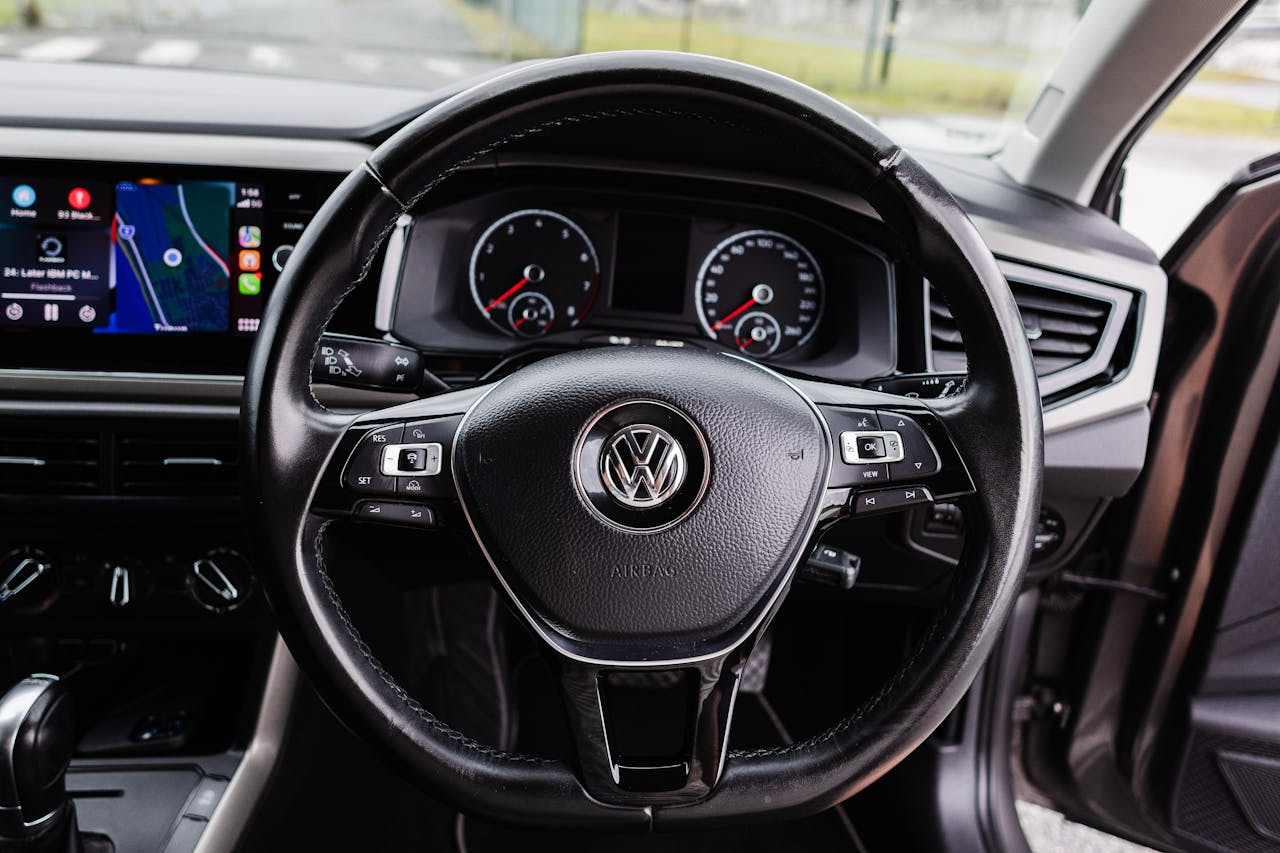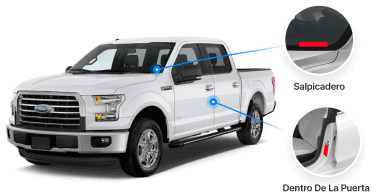El VIN es un identificador único y significativo para cada propietario de un Volkswagen. En un contexto más amplio, es importante saber cómo descifrar el VIN, especialmente para modelos Volkswagen, ya que se utiliza para diversos propósitos, desde verificar el vehículo hasta obtener información precisa sobre su historial. Este artículo explica qué son los VIN de Volkswagen, su importancia y cómo pueden leerse correctamente. Además, el VIN es fundamental para el registro correcto del vehículo, el procesamiento de seguros y el cumplimiento de los requisitos legales y regulatorios. También desempeña un papel clave en el seguimiento de retiros del mercado, reclamaciones de garantía y robos, actuando como una medida de protección tanto para el vehículo como para el propietario. Aunque el código VIN puede parecer complejo, es la puerta de entrada a una gran cantidad de información sobre tu Volkswagen.
¿Qué es un número VIN de Volkswagen?

Un VIN de Volkswagen es un código distintivo de 17 caracteres que actúa como el ADN automotriz de cada vehículo Volkswagen. Esta secuencia de números y letras no es simplemente un conjunto aleatorio; es una guía encriptada que proporciona información detallada sobre el automóvil. Cada carácter en un VIN contiene datos específicos del vehículo, como su fabricante, características y identidad única. Estos números VIN son esenciales para identificar y diferenciar diversos modelos de Volkswagen. Ayudan a determinar la autenticidad del vehículo, verificar su historial y garantizar que las piezas utilizadas para reparaciones sean adecuadas. Además, en casos de retiros del mercado o necesidades de servicio, el VIN es fundamental para identificar los modelos específicos afectados. Este nivel de detalle y especificidad convierte al VIN en una herramienta valiosa para propietarios, compradores y entusiastas de los automóviles Volkswagen.
¿Quién necesita usar un decodificador de VIN de Volkswagen?
Cualquier persona que posea, planee comprar o venda vehículos Volkswagen se beneficiará al usar un decodificador de VIN de VW. Esta herramienta es invaluable para compradores potenciales, ya que les permite verificar la autenticidad de un automóvil y conocer su historial. Los vendedores pueden utilizarlo para proporcionar información transparente a los compradores. Los mecánicos también utilizan los VIN para identificar las piezas adecuadas para reparaciones. Además, para quienes trabajan con SUVs de Volkswagen, el número de identificación del vehículo es crucial para comprender las características específicas y configuraciones de estos modelos. Ayuda a determinar el modelo exacto, el tipo de motor y las características de seguridad, lo cual es vital para garantizar que el vehículo cumpla con las necesidades personales o comerciales. Ya sea un automóvil familiar o un SUV todoterreno robusto, el VIN proporciona información esencial sobre las capacidades e historial del vehículo, mejorando la experiencia de compra, venta o mantenimiento.
Dónde encontrar tu código VIN de VW

Encontrar el VIN en un Volkswagen es bastante sencillo. El código suele estar ubicado en el tablero, cerca del parabrisas, en el cortafuegos del automóvil y dentro de las puertas delanteras. Cada Volkswagen, desde un automóvil de pasajeros hasta una furgoneta de transporte o un vehículo utilitario deportivo, tiene asignado este identificador único. Estos números de identificación del vehículo están situados en posiciones fácilmente visibles tanto para el propietario como para el personal de servicio, lo que permite localizarlos rápidamente cuando sea necesario. Además, comprender el VIN es esencial al investigar los detalles específicos de un modelo VW. Puede revelar información sobre la fabricación del vehículo, incluido el año, la ubicación de la fábrica e incluso las características instaladas originalmente. Esta información es crucial tanto para el conocimiento personal como para propósitos prácticos, como pedir piezas o verificar el historial del vehículo, lo que convierte al VIN en un aspecto clave de la propiedad y el mantenimiento del vehículo.
Cómo interpretar un VIN de VW
El VIN consta de tres secciones principales: el Identificador Mundial del Fabricante (WMI), la Sección Descriptiva del Vehículo (VDS) y la Sección de Identificación del Vehículo (VIS). El WMI revela el fabricante y el país de ensamblaje. El VDS proporciona información sobre el tipo de vehículo, modelo, estilo de carrocería y tipo de motor. Finalmente, el VIS incluye el año del modelo, la planta de ensamblaje y la secuencia de producción del vehículo. Entre estos, el código del motor y el dígito de verificación son importantes. El código del motor, ubicado dentro del número VIN, informa sobre las especificaciones y el diseño del motor, información crucial para reparaciones y actualizaciones. Los fabricantes de automóviles utilizan el dígito de verificación para validar la autenticidad del VIN completo. Esto asegura que el número VIN no sea manipulado, manteniendo la integridad y trazabilidad del vehículo. Comprender estos elementos es esencial para cualquiera que interactúe con datos del vehículo, ya que ofrecen información sobre la fabricación e identidad del vehículo.
Un número VIN de Volkswagen explicado
| Posición en el VIN | Significado |
| 1-3 | Identificador Mundial de Fabricantes (WMI) |
| 4-6 | Sección del descriptor del vehículo (VDS) |
| 7-8 | Serie de vehículos |
| 9 | Dígito de control |
| 10 | Modelo Año |
| 11 | Planta de montaje |
| 12-17 | Sección de identificación del vehículo (VIS) |
Identificador Mundial del Fabricante (WMI) (1-3):
- El primer dígito representa el país donde se fabricó el vehículo.
- El segundo dígito denota el fabricante; para Volkswagen, suele ser "V".
- El tercer dígito, junto con los dos primeros, indica el tipo de vehículo o división de fabricación.
Sección Descriptiva del Vehículo (VDS) (4-6):
- Estos caracteres identifican el modelo del vehículo, tipo de carrocería, sistema de retención y tipo de motor.
Serie del Vehículo (7-8):
- Esta sección proporciona información específica sobre el modelo y la serie del vehículo.
Dígito de Verificación (9):
- Este dígito se utiliza para verificar la exactitud del VIN.
Año del Modelo (10):
- Este carácter indica el año en que se fabricó el vehículo.
Planta de Ensamblaje (11):
- Este carácter identifica la planta donde se ensambló el vehículo.
Sección de Identificación del Vehículo (VIS) (12-17):
- Estos seis caracteres finales son únicos para cada vehículo y representan el número de producción o serie.
¿Qué puedo obtener de un decodificador de VIN de Volkswagen?

Un decodificador de VIN de Volkswagen revela una gran cantidad de información sobre un vehículo en particular. Ofrece detalles sobre las especificaciones del vehículo, como el tipo de motor, estilo de carrocería, año del modelo y planta de ensamblaje. Además, puede generar un informe del historial del vehículo Volkswagen, revelando accidentes pasados o modificaciones. Este decodificador es una herramienta poderosa para cualquier entusiasta de los automóviles o comprador potencial, ya que proporciona una comprensión más profunda del recorrido del automóvil antes de llegar a sus manos. Al usar el número de identificación del vehículo, se puede verificar la autenticidad de un automóvil, conocer su historial de mantenimiento e incluso comprobar si hay retiros del mercado pendientes o problemas legales. Es un recurso esencial para tomar decisiones informadas, asegurando que el automóvil de tu interés cumpla con tus expectativas y necesidades. Este nivel de detalle, accesible a través del VIN, es invaluable para garantizar transparencia y confianza en el proceso de compra de un vehículo.
Comprender cómo leer e interpretar un VIN de Volkswagen es clave para cualquier propietario o entusiasta de la marca. Este código único ofrece una gran cantidad de información sobre los orígenes, características e historial del vehículo. Con esta guía, descifrar un VIN de VW debería ser un proceso accesible e informativo.
¿Por qué debería realizar una verificación de VIN de Volkswagen?
Realizar una verificación de VIN de Volkswagen proporciona información vital sobre el historial y la condición del automóvil. Este informe detallado puede revelar problemas ocultos como daños estructurales previos, retiros de seguridad no resueltos o manipulación del odómetro, que podrían afectar significativamente la fiabilidad y el valor del vehículo. También ayuda a verificar los registros de propiedad para asegurarse de que el automóvil no esté vinculado a robos o gravámenes pendientes. Para los modelos Volkswagen, una verificación de VIN puede confirmar las opciones instaladas de fábrica y los detalles técnicos específicos, ayudándote a entender lo que realmente estás comprando. Al usar esta herramienta, reduces el riesgo de adquirir un vehículo problemático y garantizas una transacción segura e informada.
Recursos útiles para propietarios de Volkswagen
- Centro de ayuda de Volkswagen
- Manual del propietario en línea de Volkswagen
- Grupo Volkswagen de América
- Programa de asistencia en carretera de VW
Preguntas frecuentes
Para verificar retiros del mercado, utiliza el VIN de tu automóvil en el sitio web de EpicVIN o contacta a un concesionario. El VIN proporciona información precisa y específica del modelo sobre los retiros.
La fecha de fabricación se puede encontrar en el VIN, específicamente dentro de la Sección Descriptiva del Vehículo. Un decodificador de VIN puede ayudar a identificar la fecha exacta de fabricación.
Históricamente, el Volkswagen Golf ha sido reconocido por su fiabilidad. Conocido por su calidad duradera y rendimiento eficiente, el Golf destaca dentro de la gama de Volkswagen.
Para encontrar un código de motor VW a partir del VIN, tendrás que consultar la documentación del vehículo o utilizar un descodificador de VIN en línea. El número de bastidor en sí no muestra directamente el código del motor, pero contiene información sobre el modelo del coche y las especificaciones de producción.
La fecha de fabricación de VW puede encontrarse en la placa de conformidad del vehículo, situada en zonas como el marco de la puerta, el salpicadero del lado del conductor o debajo del capó. Además, el décimo carácter del número de bastidor representa el año del modelo.
Puedes saber si un VW está fabricado en Alemania mirando el primer carácter del número de bastidor. Los vehículos fabricados en Alemania tienen un número de bastidor que empieza por la letra W.








